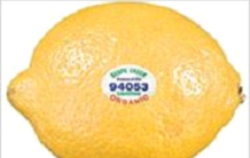
Dangerous chemicals, additives, GMO’s and other toxic things we must be aware of in order to maintain our health.
By: Empress: Diamond- Akhanki: Buchango- El, CNHP
November 13, 2012
When shopping for groceries knowing what to look for in food labeling can save you and your family’s health in the long run. Have you ever noticed the codes on your fruits and vegetables at the market? What do these codes mean? When buying produce nowadays some if not most produce come with stickers on them that bare PLU codes. The last four digits of the code tell what kind of fruit it is. By reading the PLU codes you can determine if the produce was genetically modified, organically grown or produced with chemical fertilizers, fungicides, or herbicides. Under the Federal Organic Standards these pesticides can’t be used. As a rule and to be on the safe side try purchasing Produce that have the
5 digit codes starting at 9 which means this produce was grown Organic and non GM. An Organic banana would be 94011. A genetically modified banana would have the code 84011.
5 digit codes starting with 8 means this produce is a genetically modified produce. Since genetically modified produce trump being organic, it is possible to eat an Organic produce that were produced from genetically modified seeds. A GE or GMO banana would be 84011. The 4011 of the code stand for banana. 4 digit codes means the produce was conventionally grown and contain pesticides. Pesticides are bad because they cause cancer cells to multiply. Incidentally, the adhesive used to attach the stickers on the produce is considered food-grade, but the stickers themselves aren’t edible. Now what exactly does all of this mean? Since 1996 Americans have been bombarded with toxins found in the processed foods they eat. GE plants such as soybean, corn, cottonseed, and canola have had foreign genes forced into their DNA. Most vegetable oils are made from these. The inserted genes come from species such as bacteria and viruses which have never been in the food supply and shouldn’t be. This gene insertion process allows the plants to survive an otherwise deadly dose of weed killer. Farmers use considerably more herbicides on these GM crops and so the food has higher herbicide residues. About 68% of GM crops are herbicide tolerant. The second GM trait is a built-in pesticide, found in GM corn and cotton. A gene from the soil bacterium called Bt (Bacillus thuringiensis) is inserted into the plant’s DNA, where it secretes the insect-killing Bt-toxin in every cell. About 19% of GM crops produce their own pesticide. Another 13% produce a Pesticide and are herbicide tolerant. Studies suggest that eating foods contaminated with pesticides may cause birth defects in pregnant women, nerve damage and even cancer. Just by following these guidelines and rules you could rid yourself about 80% of the pesticides you might be taking in on a given day. The American Academy of Environmental Medicine states, “Several animal studies indicate serious health risk associated with Gm food,” including infertility, immune problems, accelerated aging, faulty insulin regulation, and changes in major organs and the gastrointestinal system. They asked physicians to advise patients to avoid GM foods”. Have your physician advised you of the GM risk lately? That’s okay because YOU ARE BEING WARNED of THE DANGERS of EATING GM crops as you read this article. Genetic modification is radically different from natural breeding. Genetic engineering transfers genes across natural species barriers. It uses imprecise laboratory techniques that bear no resemblance to natural breeding, and is based on outdated concepts of how genes and cells work. Gene insertion is done either by shooting genes from a “gene gun” into a plate of cells or by using bacteria to invade the cell with foreign DNA. The altered cell is then cloned into a plant. Due to there being no mandatory GMO food labeling in this country the American people have to take responsibility for their own health by becoming aware of the foods that are safe and those that are not. There are four ways we can avoid GMO’S: Buy Organic, buy products that say non-GMO, Buy products listed on a non-GMO shopping guide, or avoid the ingredients that spell trouble and bad health. |